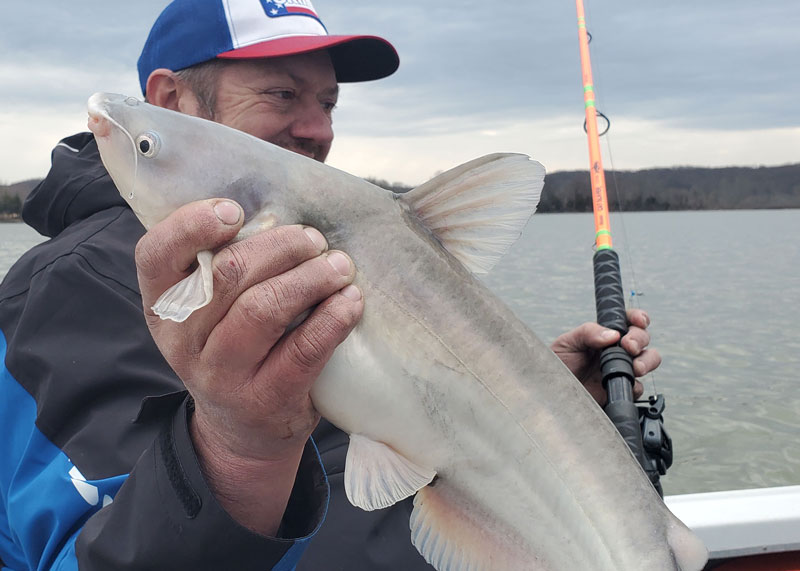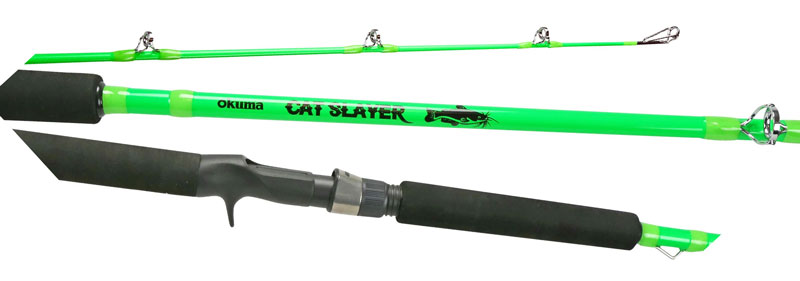It’s true that in many of our waterways, their huge populations make catfish one of the easiest species to target. But it’s just as true that there’s no such thing as a sure thing when it comes to fishing, and there will be days when you have a tough time getting a bent rod even when you know there are countless catfish swarming in the waters all around you. Go fishing with a lackadaisical attitude and sure, you’ll still catch fish some or maybe even most of the time. Put these 10 tips to use, however, and you’ll catch a lot more catfish a lot more of the time.

- Don’t cast all your baits out then let them sit on the bottom for hours at a time. Freshness counts, and a bait that’s been soaking for an hour or more should be considered officially in need of replacement. If you check a bait and it looks washed out or muddied up from the bottom, ditch it and put on a new one. Speaking of bait freshness: remember that fresh bait always trumps the frozen stuff.
- Mix some floaters (sometimes called the “Santee” or “Santee Cooper” rig) into your spread. Baits set on bottom using a fishfinder rig will usually draw plenty of strikes, but a float rig will work magic some days. Most of these have a float six inches to a foot from the hook, two to three feet above the weight. You can also use a floating jig on the end of a weighted line. These tend to be particularly effective when your target is blue catfish, which often cruise around off the bottom and are more predatory than scavenging as opposed to some other catfish species.
- Bring a mix of baits. As a general rule of thumb you’ll want to match the hatch, and offer up a meal that’s similar to the most prevalent species in the area. But these are fish we’re talking about, people, and sometimes there’s just no explaining why they choose what they choose. Mud shad are a consistently good bet in Chesapeake tributaries, for example, but sometimes cut white perch out-catches them… and this can happen up the river during the winter months, when and where the white perch aren’t yet around in good numbers. Similarly, we’ve seen bunker be the bait of choice during late fall when the bunker have already abandoned upriver areas. The bottom line? You just never know what will be best, so give ‘em a smorgasbord and let the catfish tell you what they want most on any given day.
- Try bringing chicken. No, tossing chicken breast into a river is definitely not the best way to match the hatch, but catfish sharpies know that when properly prepared, it can make for a deadly bait. Preparation includes marinating the breast in strawberry Jell-O or cherry Kool-Aid for a few hours or overnight in the fridge. Yeah, we know that sounds weird, but pretty much everyone who tries it swears by it. That said, don’t neglect to remember the above tip—we’d encourage trying that colorful chicken breast but we’d also encourage having some fresh cut fish chunks in the water, too, and letting the catfish decide which they’d prefer to eat on any given day.
- Gear up specifically for catfish, rather than making do with whatever tackle you have that happens to be closest in nature. If you didn’t catch our article on gearing up for trophy blue catfish in the March edition check it out now, and be sure to check out our Gearing Up for Monster Blue Catfish video. We’ve fished Okuma Cat Slayer and Cat Slayer Custom rods side-by-side with rockfish gear, and yes, it does make a difference. Use the right tool for the job and you will catch more fish.
- Give night fishing a shot, especially once the heat of summer sets in. Catfish get very active at night and in many waterways night fishing will be the best way to target them. That said, look back to Tip #5 above; make sure you have rods that are coated with UV paint and are highly visible in the darkness, like the Cat Slayers, so you see that tip bob and dip at the very first nibble.
- If you’re fishing from a kayak or boat in areas where there aren’t too many snags and most of the structure relates to drop-offs and channel edges, consider drifting rather than anchoring up. Since there may not be any obvious “road signs” telling you where to stop and fish, drifting will let you prospect without having to anchor and re-anchor. When and if you discover a hot zone you can change tactics and stick around. Sometimes when the current and/or wind drops out, slow-trolling is a good move, too.
- Don’t go under-gunned. Sure, the bulk of the catch will likely be 20” to 30” fish. But there are some true river monsters out there in Chesapeake Country and whether you’re fishing in the James, the Potomac, or the Susquehanna, there’s a very good shot at hooking into a fish of 40 pounds, 50 pounds, or even more. This is not the time nor the place for wimpy rods and reels, or at some point you’ll very likely regret it.
- Bulk up your spread as much as possible, and fan-cast around your boat or from the shoreline. Casting out three lines per angler will allow you to cover a heck of a lot more water than one line per angler, and it can make a huge difference in the catch.
- Pay attention to cold fronts. Many freshwater-oriented species are sensitive to changes in the weather, and blue catfish in particular can turn on and off like a light switch when a front passes through. Every day is different, but as a rule of thumb they tend to feed hard six to 12 hours ahead of a front and often shut down when the front passes through and causes a major change on the barometer.

You say you kept hearing how easy it was to load up on cats, but caught a skunk when you tried? Maybe you had high hopes for a loaded cooler, but barely caught enough for dinner? It’s a fact that catfish populations have exploded in our region in recent years, but these are still wild creatures and they still act in ways that can be tough to predict. Plus, they definitely aren’t aching to get yanked out of the water by a human. There’s simply no such thing as a sure thing in fishing no matter what species you’re targeting and where you go fishing. But if you take heed of these 10 tips your chances of hooking up just got better—and those rods will be bending before you know it.
Slaying the Beast
We want to give Okuma one more shout-out for sponsoring our catfish-crushing series this spring, and remind everyone that they did so after carefully designing the Cat Slayer and Cat Slayer Custom rods to be ideal specifically for targeting catfish. With the blue catfish population explosion here on the Bay there’s never been a better time to target the cats, and there’s never been a better rod than the Cat Slayers made for the task. We’ve tried ‘em and we’re believers—wrap your hands around one of these rods and judge for yourself, and we’re pretty darn sure you’ll come to the same conclusion.
